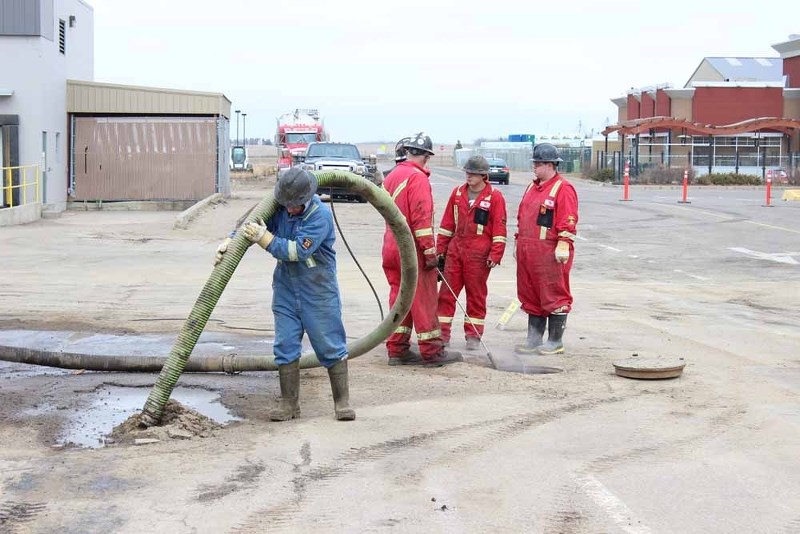According to a statement from Const. G. Lapointe of the St. Paul RCMP, it was an act of vandalism that led to the oil spill in St. Paul during the early morning hours of Nov. 4.
“An unknown individual tampered with the valve at the back of the vehicle. The driver, who never realized what happened, drove to a rural location in Elk Point from St. Paul,” he said.
As the incident is currently under investigation, not many details are being released to the public at this time.
“We were able to identify the truck driver, we were able to identify the company that the oil came from, and both of them are cooperating with the investigation right now,” Lapointe said. “We are still attempting to identify the person who is responsible for tampering with the valve.”
Ryan Bartlett, a public affairs advisor with Alberta Energy Regulator (AER), later reported to the Journal that the spilled substance was in fact crude bitumen, which Bartlett described as a mixture of oil and sand. He further defined it as, “a naturally occurring viscous mixture that, in its naturally occurring viscous state, will not flow to a well.”
The spill originated in the parking lot between Giant Tiger and Co-op. St. Paul Fire Chief Trevor Kotowich was one of the first responders to arrive on the scene.
“St. Paul Fire was notified at about 3 a.m. this morning of an oil spill at this location,” he said during an interview later that morning. “When I arrived, there was obviously a large quantity of oil that was spilled on the ground.”
He went on to describe the scene in a little more detail.
“It was very dark. There were two or three RCMP vehicles. It was a large pool of oil, probably two to three inches thick, and maybe 100 feet by 50 feet wide. There was nothing here but a valve cap left in a pool of oil,” he said.
“Our first role as a first response was, of course, scene safety, and then just to cordon the area off. We had contacted our Public Works and our Water Works departments right away. We just started to contain the spill,” Kotowich said. “CNRL then showed up and pretty much took over.”
The Journal acquired a statement on Tuesday morning from Canadian Natural Resources Limited (CNRL), which read, “Canadian Natural is working together with the St. Paul Fire Department and Police Department to contain a third party spill that was identified at approximately 4:00 a.m. on Nov. 4, 2014 in the Town of St. Paul. Clean-up activities are underway. Canadian Natural is supporting the investigation to determine the third party responsible.”
According to Bartlett, the spill stretched about 50 kilometres down the highway while the driver made his or her way towards the Lindbergh plant.
“That’s all being cleaned up as we speak,” Bartlett said during an interview at about 9:10 a.m. on Nov. 4. “With help from the St. Paul county highway maintenance crews, sand was spread over the oil that leaked onto the highway, and it is being gathered up and taken to an approved waste management facility. It was entirely contained on the road surface. None of it went into the ditches or into any water bodies.”
The same could not be said, however, for the original site of the spill. According to Bartlett, approximately 400 litres of the substance entered the Town of St. Paul’s storm water system on Tuesday morning.
“It was contained about 250 metres from where it entered the system itself. It didn’t go any further than those 250 metres,” Bartlett said that morning.
In a later interview with Bartlett, he confirmed that the crude bitumen was indeed contained within that area.
“The crude bitumen was isolated to the sewer system,” he said. “The storm water sewer system was flushed and steamed out to clean out all remaining bitumen that might be in there after they vacuumed it out.”
A later statement from CNRL read that, “Clean-up activities were completed that same day.”
“At this point, we are confident that the cleanup was done properly,” Bartlett said. “From this point on, the incident is complete in our books.”
Bartlett added that AER is requiring CNRL to submit a monitoring plan to ensure any residual oil does not migrate through the storm sewer system.



